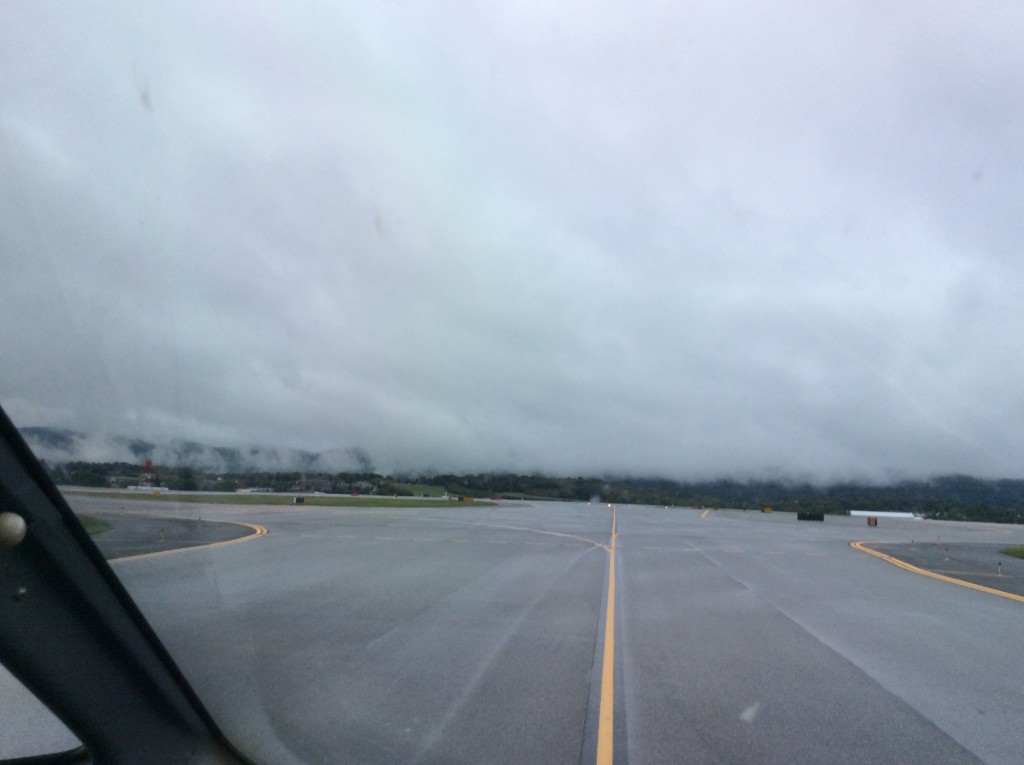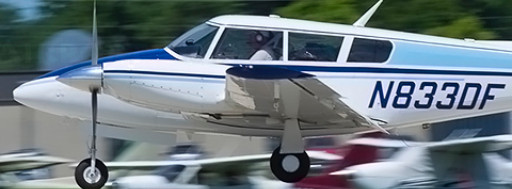Heading to Florida for a few days of warmth with friends
My wife and I were invited by our good friends, Bernadette and John, to visit them while they vacationed near Punta Gorda, FL. Our plan was to fly our Twin Comanche down on Saturday, February 24th and to fly back home on Tuesday morning, February 27th. We’d make one stop to break the trip up in 3 hour legs.
Deciding to Start the Flight
Long range forecasting showed a storm system going through in the days prior, with a front clearing that was supposed to clear by the time of our departure. I admit that there was an Airmet Zulu in effect for the first hour of our trip, but I saw clearing at my departure point. I expected to be able to depart and find a layer I could fly through outside of the clouds.
I was wrong.

Recognizing a Problem
After climbing to 6,000′ I did find that I had no icing happening on the airplane at that altitude. The temperature was 6o C on the surface, and right at the freezing point reaching 6,000′. So far the weather was meeting my expectations, with only light icing on the windshield that I accumulated in the climb. There was nothing visible on the wings or the tail, and I was flying between layers, so life was good.
I was watching everything, and briefed Beverly on what to look for as we flew on. While still in the clear, I noticed that the ice on the windshield didn’t dissipate, and was actually continuing to build very slowly. At the same time, the layer we were flying in began to narrow and seemed to disappear in the distance.
Aborting the Flight
Were I to take no action and remain at 6,000′, I’d be flying in known icing with an ill-equipped airplane. My choices were to return to Wilmington, DE; climb above the ice and maybe find another layer; descend to clear air; or land at a nearby airport.
Returning to Wilmington, DE
I didn’t consider this an option, simply because I fully expected the lingering clouds to open up and let me out. I was still planning on a mostly clear flight to Punta Gorda, FL.
Climbing Above
Reports came in that 13,000′ was clear of ice. Climbing could take time where I’d be exposed to more ice, and there was no guarantee that it would continue to be ice free once up there. Furthermore, Airmet Zulu was valid up to 16,000′. Finally, I’d have to consider that an icing encounter up there would have me descending down through potentially even more ice. Climbing was a dangerous option, given that the weather had already surprised me once.
Descending below
Getting under the weather would be an option. I’d have to get down to 3,000′ in this area, and even that low would not be clear passage further south. I’m not sure I’d be able to remain in the IFR system while that low for that length of time either. It was warmer below 6,000′ in the Wilmington area, so that was a plus. Descending below was an option that was unlikely to work for the distance required to clear the ice, so I ruled that out as well.
Aborting the Flight and Landing
Landing at a nearby airport while the ceilings were high in this area and the weather VFR or MVFR was clearly an option. In fact, it was the only option where I was certain that the pilot and airplane could be 100% successful. Once I thought about it for a few seconds, I made the call and diverted to Easton, MD off of our right wing.
I was cleared direct for the visual to RWY 4, with a descent out of 6,000′ for 3,000′. As I began the descent, we began accumulated RIME ICE at a moderate rate. This confirmed that continuing at a lower altitude would not have worked, nor would remaining in clouds at 6,000′ or higher. I hastened my descent to minimize my time building ice, and we broke out at 3,000′. Below that, the ice began to dissipate. We landed without incident and taxied in.
Beverly and I waited for three hours in the Easton FBO lobby for the weather to clear. We met a retired cop and his wife and had a nice talk with them. I wanted to wait long enough to get closer to the end of forecast ICE, and avoid another need to abort.
Launching from Easton
At 12:30 pm, the ceilings were once again breaking up, particularly to the west of us. I felt comfortable that we could make a go of it this time, so we fired up and departed. All I’d need to about 30 minutes of flight time to clear the Airmet Zulu, which had only 30 minutes left on it by this time. I should also note that the surface temps had gone up 5o C or so, so the freezing level would be somewhat higher this time.
Look for my next post to see how that flight went on the same day. This was not an easy day.

